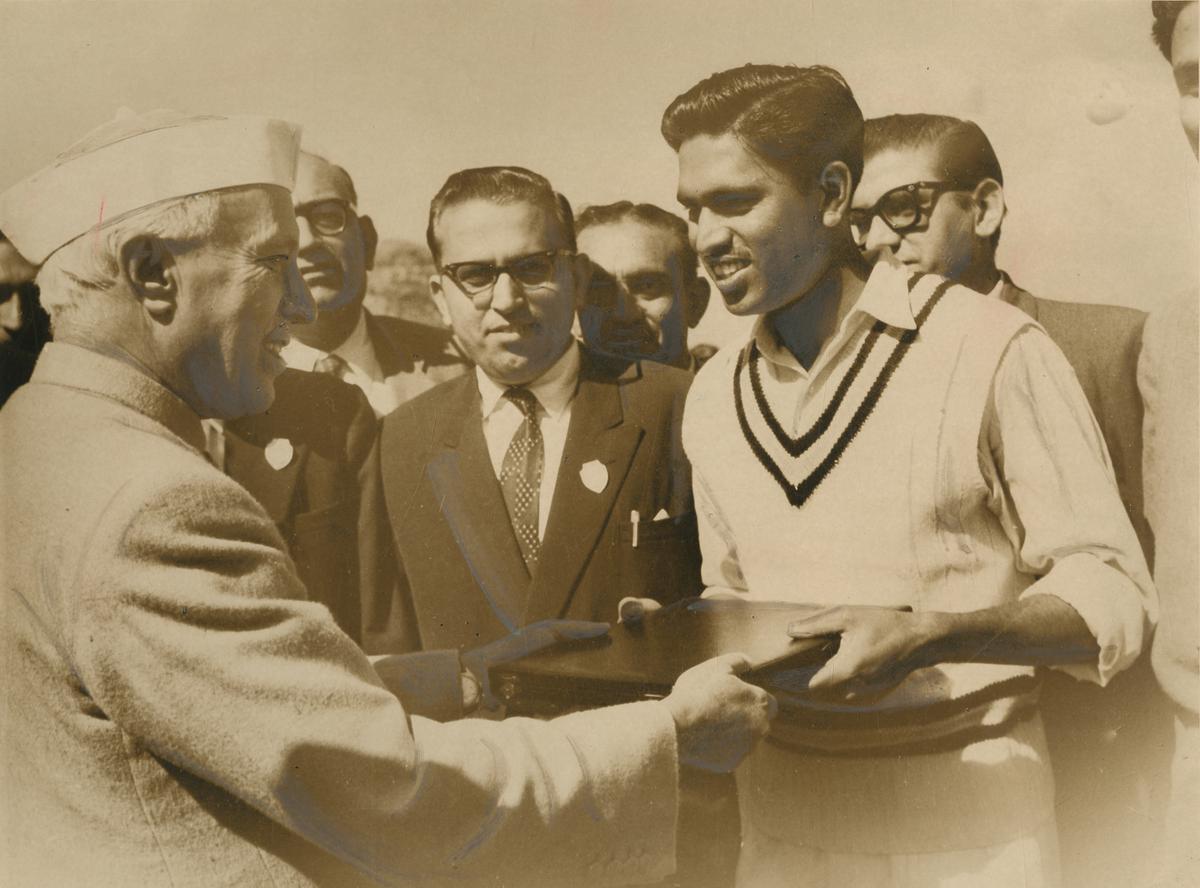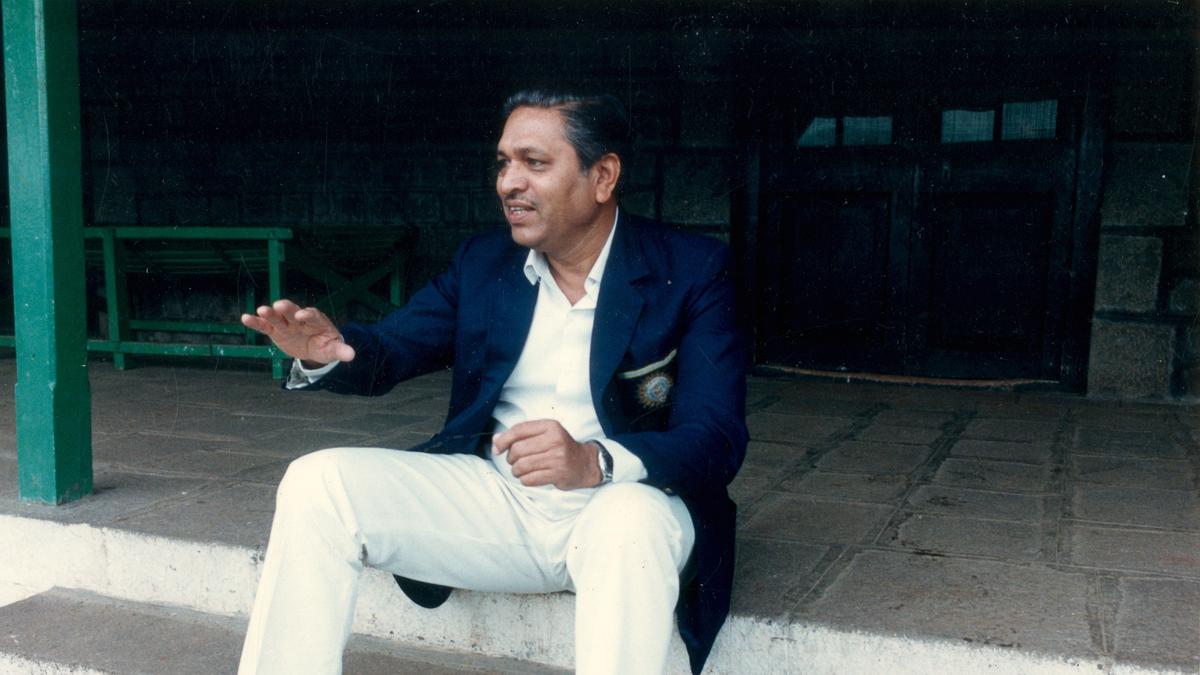Chandrakant Gulabrao, known as Chandu Borde, a versatile cricketer who played 52 Tests for India in the 1950s and 1960s, is set to celebrate his 90th birthday in July. After retiring from the game, Borde remained actively involved in Indian cricket, serving as a selector, team manager (de facto coach), and cricket manager until 2007. Recently, he was honoured with the IDFC First Bank Lifetime Achievement Award at the Sportstar Aces Awards 2024. Before graciously accepting the award and captivating the audience with his witty humour, Borde reflected on his cricket journey, sharing some memorable experiences from his time on and off the field.
Reflecting on nearly eight decades of your association with cricket, how do you perceive the journey you’ve undertaken thus far?
I have never thought about this. I have spent so much time with the game. I never felt like I was such an old man or something. Sometimes, when I sit back and think about the people with whom I played and the people with whom I was associated, I feel very, very happy. To know them, the wonderful time I had during my cricketing period, the ups and downs… I wonder about present-day cricket because there is so much change in the game — in bowling, batting, fielding, everything. I don’t think we could have survived with it. Hitting the ball through the legs (laughs), I don’t think I could have done that, or hitting over the head. But watching these present-day cricketers and how they have adapted to this kind of cricket, sometimes I wonder whether we — or I — could have done that. Seven to eight decades is a long time, and I came across great cricketers — not only from India but abroad as well. That was a tremendous satisfaction.
It’s well documented that Vijay Hazare was one of the biggest influences on you.
In three different eras, I was closely involved with three great cricketers. I was their mentee, manager, and selector. For instance, Mr. Vijay Hazare was a huge influence on me. Cricketing-wise, I learned a lot watching him because I bowled to him in the nets playing for Baroda; that was the first decade. And what a fantastic batsman! For me, he was the best in that era.
Later on came Sunil Gavaskar. The way he batted against the fast bowlers without a helmet, without protective gear, and getting so many runs was phenomenal. That’s the second decade.
And the third decade or era was Sachin Tendulkar, when I managed the team on his first tour with the Indian team. These three great players performed very well for the country and for the cricket fraternity.
Can you recall the most memorable incident with each of these three people?
The first incident took place at Baroda during the Ranji Trophy final against Services, captained by Colonel (Hemu) Adhikari in 1957–58. Mr. Hazare was with the Indian team at that time, around 40 years old. Services planned meticulously to dismiss him promptly. Being a military man, Colonel Adhikari instructed the fast bowler Surendranath to deliver a bouncer on the off-stump as soon as Mr. Hazare came to bat. We noticed their preparation during the two days of practice before the final. As soon as Mr. Hazare entered at No. 4, Surendranath executed the plan with a beautiful bouncer. Mr. Hazare attempted to hook, missed, and the ball went to mid-on, where the fielder dropped the catch. Colonel Adhikari went and told the fielder, “Don’t worry, boy, you will get the next chance when he scores 200.” True to his words, Mr. Hazare scored a double hundred, and our partnership was around 100 runs (147). It was a tremendous learning experience to watch him.
Moving on to Sunil Gavaskar… I had the privilege of being a selector when he made his Test debut [in 1971]. More than a decade later, after drawing [the fifth Test] with England in Kanpur in February 1985, the team was set to tour Australia for the Benson & Hedges Trophy. I was the chairman of the selection committee, and we had decided to make Sunil the captain. But I heard that he may announce his retirement, and I didn’t want him to do that. I visited his room one evening and we chatted over a cup of tea. I told him, “When you come back after winning the Benson & Hedges Trophy, don’t announce retirement or give up captaincy.” He responded with a wry smile, leaving us uncertain. He indeed gave up captaincy after winning the final, where Ravi Shastri won the Audi. That marked the second incident.
The third incident occurred in Sialkot during Sachin’s tour with the Indian team. As the manager, I witnessed Sachin being hit by a bouncer, causing bleeding. I went to the ground, suggesting we go back to the dressing room for treatment. However, Sachin insisted, “No, sir, I am going to play.” The physio arrived and managed the bleeding. Sachin wore his helmet and promptly hit three clear boundaries. We were all surprised, and I was sure he was going to stay there for a long time.

The Prime Minister of India, Mr. Jawaharlal Nehru, hands a silver plate to Chandu Borde, who had the distinction of scoring the only Test century against the Tourists, before commencement of play on third day of the fifth Test match between India and West Indies at the then Feroze Shah Kotla ground in New Delhi.
| Photo Credit:
THE HINDU ARCHIVES
The Prime Minister of India, Mr. Jawaharlal Nehru, hands a silver plate to Chandu Borde, who had the distinction of scoring the only Test century against the Tourists, before commencement of play on third day of the fifth Test match between India and West Indies at the then Feroze Shah Kotla ground in New Delhi.
| Photo Credit:
THE HINDU ARCHIVES
Can you recall the 2007 Test series win in England when you were appointed as Cricket Manager during a turbulent phase?
We won a series in England after 21 years, and still, it didn’t get that much recognition. (Rahul) Dravid was the captain. That was a very good victory. Just before that, the team had lost miserably in the (ODI) World Cup [in the West Indies], and there was unpleasantness among the players, so I was appointed.
Which role have you found the most enjoyable yet challenging?
A cricketer’s, of course. Particularly against the West Indians. We never saw that kind of bowling during our cricketing period, and they used to bowl from 18 yards because the front foot (no-ball) rule was not applicable then. We had no helmet or elbow guard.
The thigh pad was very thin. Sometimes, we used to put gloves inside pads. That was quite frightening. But I played some challenging cricket [during the West Indies tour of India in 1958/59]. I scored a hundred [in the first innings] in the Delhi Test but missed out on one in the second innings [he was dismissed for 96]. From then on, I enjoyed playing against all countries.
Do you have any regrets?
Regrets were few, or quite a bit. And very disheartening. Once I was told that I was going to lead the side the next day, and then in the morning, somebody else came in as the captain. Once the chairman [of the selection committee] came to Vidarbha, where I was playing a match and the team was selected. Though I was padded up and ready to bat, I was asked to remove all those things, and I was out of the XI. But when I look back, I think whatever happened, happened for the best. If I had been selected as a captain but failed to give my best or win the series, I would not have played again. I took it in a positive way. So, I am quite happy now.
Despite going through such experiences and playing purely for passion with very little financial rewards, how do you not sound bitter when you see modern-day cricketers earning crores of rupees?
Not at all. In fact, I enjoy it. Yes, we never played for money. You will be surprised to know that during our time in the 1960s, we were getting ₹250 per match. Damodar Karmarkar (popularly known as Mama Karmakar) was the BCCI secretary then, and he told us: “In the evening, we are going to one gentleman’s place for dinner who is financially well off, and you will be rewarded with ₹1,000 each.” We were pleased; we went there, enjoyed a sumptuous vegetarian meal, and that’s it. Those thousand rupees are still to come. We were hurt, but then we also forgot. This has happened during my cricket career. But it’s good for life too; when you only get success, you get used to it and ignore the lows. Instead, when you experience all of it, success becomes a great feeling. This is what I am enjoying.


